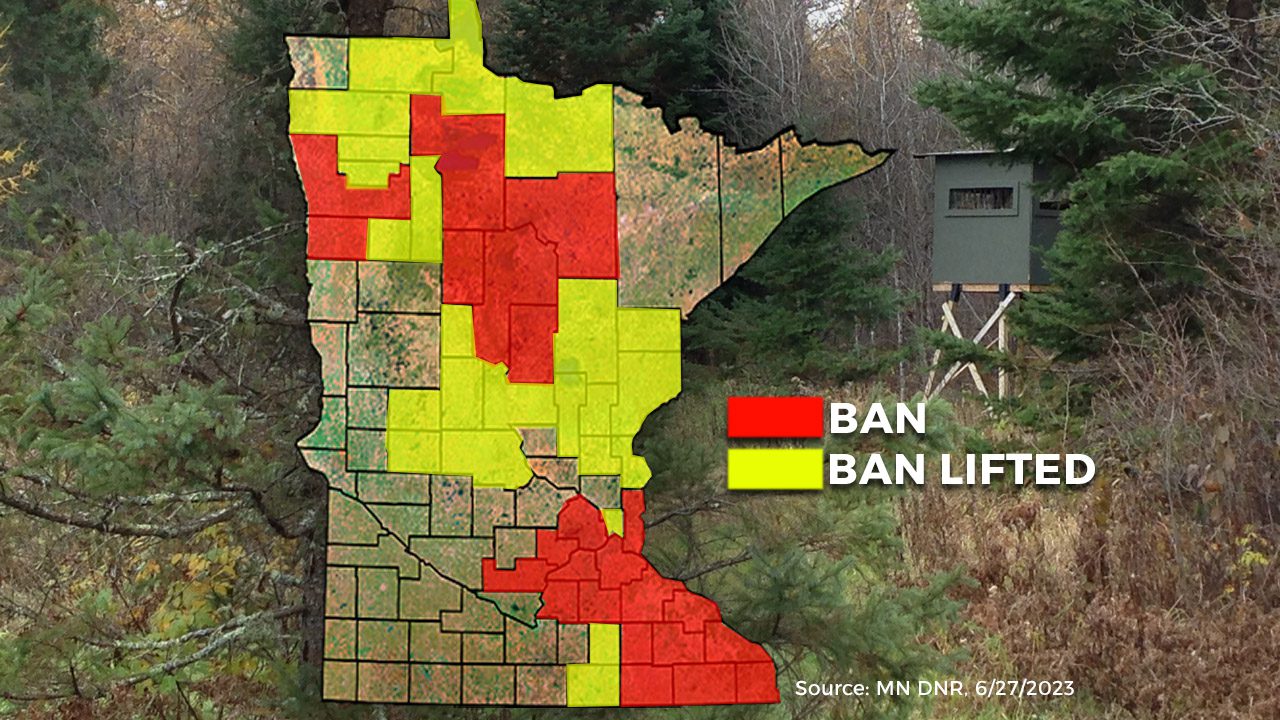DNR makes changes to deer feeding and attractant bans

DNR makes changes to deer feeding and attractant bans, June 27, 2023 (Minnesota Department of Natural Resources)
The Minnesota Department of Natural Resources (DNR) is making changes to their deer feeding and attractant bans in 29 counties. According to a release from the DNR, they will remove the bans on deer feeding and attractants in 24 counties to focus restrictions on areas where risk of chronic wasting disease spread is of greatest concern.
The DNR says five new counties have been added to the list of bans, including Beltrami, Carver, Itasca, Le Sueur and Sibley.
“The DNR uses feeding and attractant bans as a tool to reduce unnatural crowding of deer and reduce the risk of exposure to CWD,” said Todd Froberg, big game program coordinator. “We are using these tools where we think they will provide the greatest potential to benefit the health of Minnesota’s white-tailed deer. This approach limits CWD risk and helps reinforce the connection feeding and using attractants have on the risk of spreading disease.”
A summary of the changes from the Minnesota DNR:
Feeding or feeding and attractant bans have been removed from the following counties: Aitkin, Carlton, Chisago, Clearwater, Douglas, Freeborn, Isanti, Kanabec, Koochiching, Lake of the Woods, Mahnomen, Marshall, Mille Lacs, Morrison, Pennington, Pine, Pope, Ramsey, Red Lake, Roseau, Stearns, Steele, Todd and Wadena counties.
Feeding and attractant bans are in effect for the following counties: Beltrami (new), Carver (new), Cass, Crow Wing, Dakota, Dodge, Fillmore, Goodhue, Hennepin, Houston, Hubbard, Itasca (new), Le Sueur (new), Mower, Norman, Olmsted, Polk, Rice, Scott, Sibley (new), Wabasha, Washington and Winona counties.
The DNR does not encourage the public to feed deer. They recommend residents interested in helping deer, especially during severe winter conditions should focus on improving the habitat during growing season, to provide long-term food resources and shelter.
For more information on how to improve private land for the benefit of deer and other wildlife, visit the DNR website.